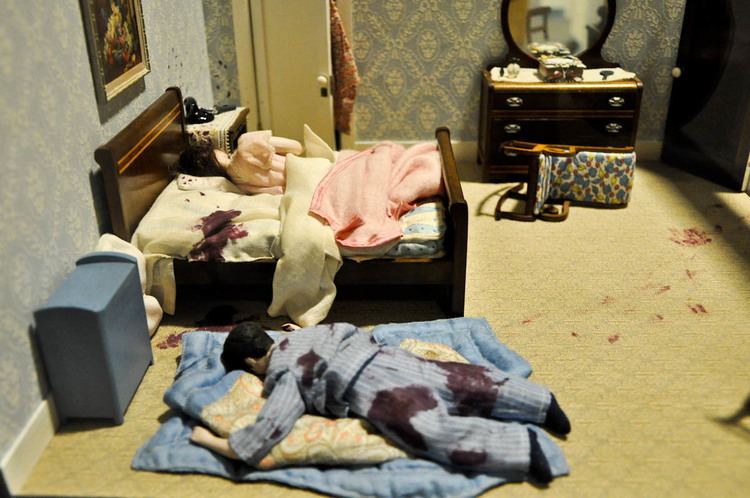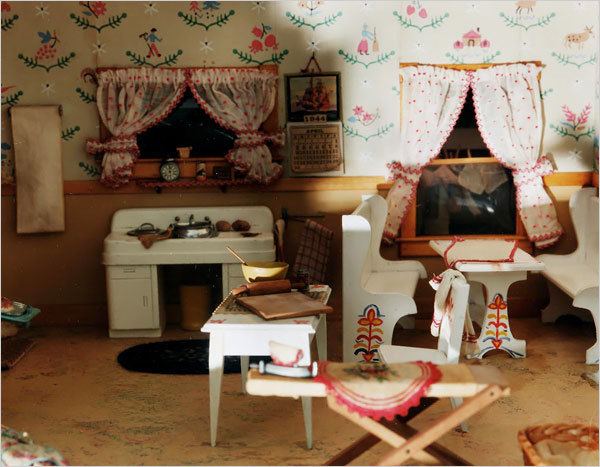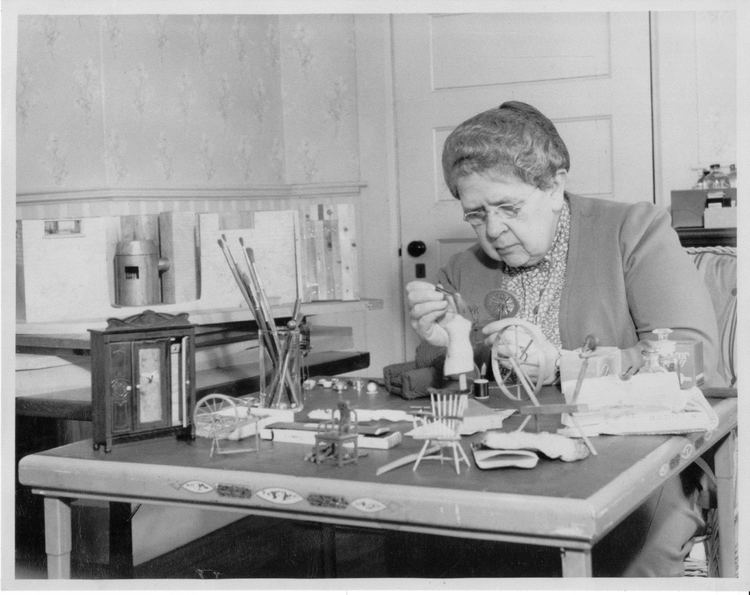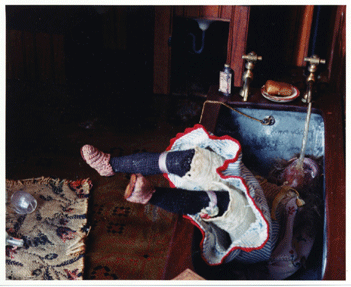 | ||
The Nutshell Studies of Unexplained Death are a series of eighteen (twenty were originally constructed) intricately designed dollhouse-style dioramas created by Frances Glessner Lee (1878–1962), a pioneer in forensic science. Glessner Lee used her inheritance to establish a department of legal medicine at Harvard University in 1936, and donated the Nutshell Studies in 1945 for use in lectures on the subject of crime scene investigation. In 1966 the department was dissolved, and the dioramas went to the Maryland Medical Examiner’s Office in Baltimore, Maryland, U.S. where they are on permanent loan and still used for forensic seminars.
Contents

The dioramas are detailed representations of death scenes that are composites of actual court cases, created by Glessner Lee on a 1 inch to 1 foot (1:12) scale. Each model cost about US$3,000–4,500 to create. She attended autopsies to ensure accuracy, and her attention to detail extended to having a wall calendar include the pages after the month of the incident, constructing openable windows, and wearing out-of-date clothing to obtain realistically worn fabric. The dioramas show tawdry and, in many cases, disheveled living spaces very different from Glessner Lee's own background. The dead include prostitutes and victims of domestic violence.

Glessner Lee called them the Nutshell Studies because the purpose of a forensic investigation is said to be to "convict the guilty, clear the innocent, and find the truth in a nutshell." Students were instructed to study the scenes methodically—Glessner Lee suggested moving the eyes in a clockwise spiral—and draw conclusions from the visual evidence. At conferences hosted by Glessner Lee, prominent crime-scene investigators were given 90 minutes to study each diorama.
Alphabetical list of dioramas

In popular culture


